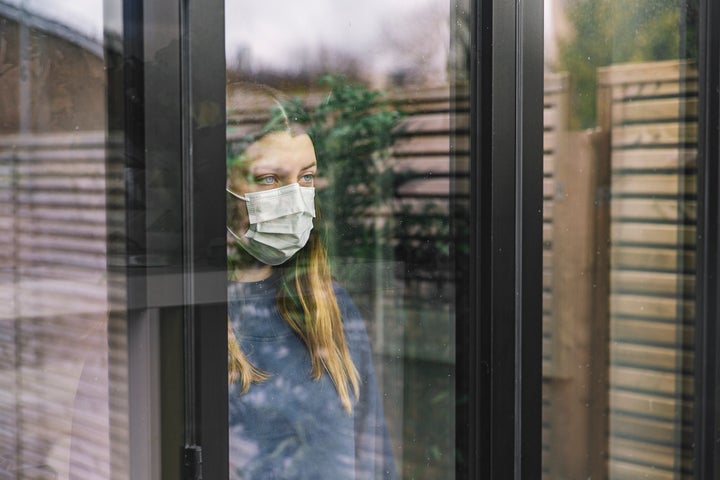We’re here to guide you through the coronavirus lockdown. Sign up to the Life newsletter for daily tips, advice, how-tos and escapism.
More than two million people in England who have been shielding for months have been told they can now go outside with those they live with, or meet one person from another household, as long as they socially distance.
Originally, this group – classed as extremely clinically vulnerable – had been told to stay home at all times and avoid face-to-face contact until June 30. However, the advice changed over the weekend ahead of schools and some shops reopening on June 1.
So, what do people who are shielding need to know right now?
What is the new guidance in England?
Under the new guidelines, people shielding in England are allowed to venture outdoors once per day, either with members of their household or one person from another household – ideally, this should be the same person each time.
If you’re shielding and you decide to leave the house, you should ensure social distancing and strict hygiene is maintained. This means washing hands regularly, not touching your face with unwashed hands, and cleaning and disinfecting frequently touched objects and surfaces in the home.
There’s no limit to the amount of time you can spend outdoors, however it’s advised that at-risk people avoid crowds or crowded areas and strictly avoid contact with others, especially if they are displaying symptoms of the virus.
The guidance states people who are shielding are still “strongly advised” to stay at home as much as possible and keep visits outside to a minimum.
What about the rest of the UK?
The updated guidance only applies to England. Scotland, Wales and Northern Ireland are believed to be in the process of regularly reviewing their shielding guidelines. According to Communities Secretary Robert Jenrick, Scotland, Wales and Northern Ireland “will issue their own guidance in due course”.
Who does the guidance apply to?
The shielding guidance applies to anyone who is considered clinically extremely vulnerable in England, as well as their family, friends and carers.
This includes organ transplant recipients, people with specific cancers and people on immunosuppression therapies as well as those in long-term care facilities for the elderly or with special needs.
There are believed to be 2.2 million at-risk people shielding in England.

What’s the science behind the updated guidance?
The government said the change in guidance stems from the substantially lower level of Covid-19 transmission in the country compared to when lockdown was first introduced.
However, a number of charities have called for the government to be more specific in their scientific basis for updating the guidelines, citing “confusion” caused by the sudden announcement.
“The way [the government] announced this on a Saturday night, with no warning or consultation with charities and clinicians, has created confusion,” said Gemma Peters, chief executive of Blood Cancer UK. “Until we get (clarity), we advise people to speak to their healthcare teams before making any changes.”
Government advisers have warned that the easing of lockdown measures could cause a second spike in coronavirus cases. Scientists Sir Jeremy Farrar and Professor John Edmunds, members of the Scientific Advisory Group for Emergencies (Sage) – which advises the government on Covid-19 – said ministers were “taking risks” by following their current plans.
Should you wear a mask?
People who are shielding haven’t been told to wear face masks.
The government advice is that people should wear face covers when in places where they can’t socially distance – such as shops or public transport. However, as it stands, people who are shielding shouldn’t be going to places where they can’t socially distance.
Going forward, there’s some evidence to suggest vulnerable people might benefit from wearing masks. Paul Hunter, an infectious diseases expert and Professor in Medicine at University of East Anglia, analysed numerous studies on the use and effectiveness of face masks.
His UK-based review found people who wore masks, usually of surgical grade, were less likely to get respiratory symptoms from casual exposure in the community. It’s a small reduction in risk, he said, but it might be important to vulnerable people.
How do people who are shielding feel about the updated guidelines?
Mother-of-two Shelley Simmonds and her family haven’t left their home in Essex for more than 10 weeks, in order to protect her son Fraser, seven, who has a rare genetic disease, and associated respiratory weakness.
She recently received a letter telling her to “stay at home at all times” and “avoid all face-to-face contact”. She told HuffPost UK the sudden announcement that they could leave the house came as a “total shock”, and she’s worried it will cause confusion amongst many of those most vulnerable to the virus.
“Overnight, it seems like something’s miraculously changed,” she said. “I can’t say that anybody is going to feel comfortable trusting the government after what has happened so far. We definitely won’t be going out. We haven’t shielded all this time to step outside and take risks.”
Sarah Jones, 47, from West Sussex, hasn’t left the house since March. She has had 60 operations over the course of her life, one of which – 14 years ago – was a kidney transplant.
She believes the change in guidelines has come “maybe a bit too soon”. That said, she continued, “it’s not an order. It’s just an option, so if people want to go out and feel safe doing so they can, or they can choose to stay indoors”.
When will the guidance be updated next?
The next review of shielding measures is scheduled to take place in the week beginning June 15.
Robert Jenrick flagged on Sunday that guidance for those shielding could become strict again if the virus starts to flare up, but added that he’s hopeful of future guidance being more tailored to each individual, rather than the current blanket approach.
